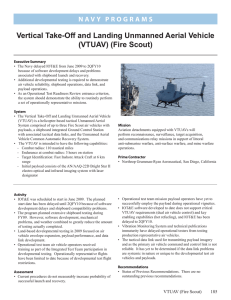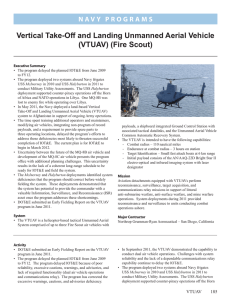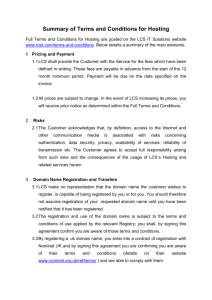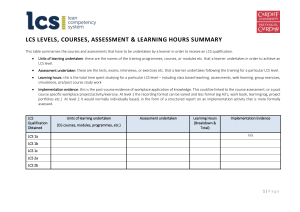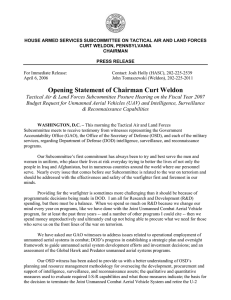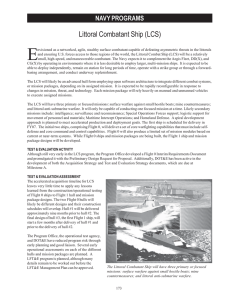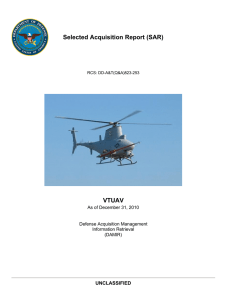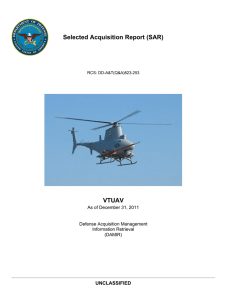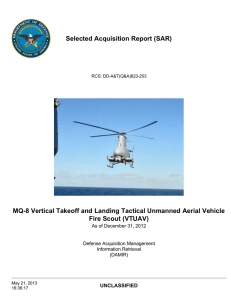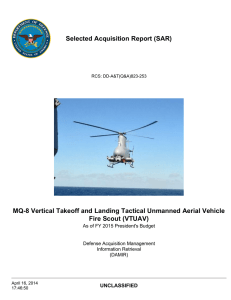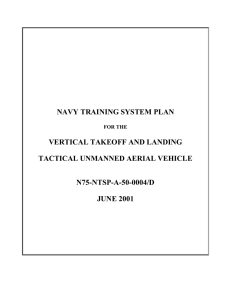Vertical Take-Off and Landing Unmanned Aerial Vehicle (VTUAV)
advertisement
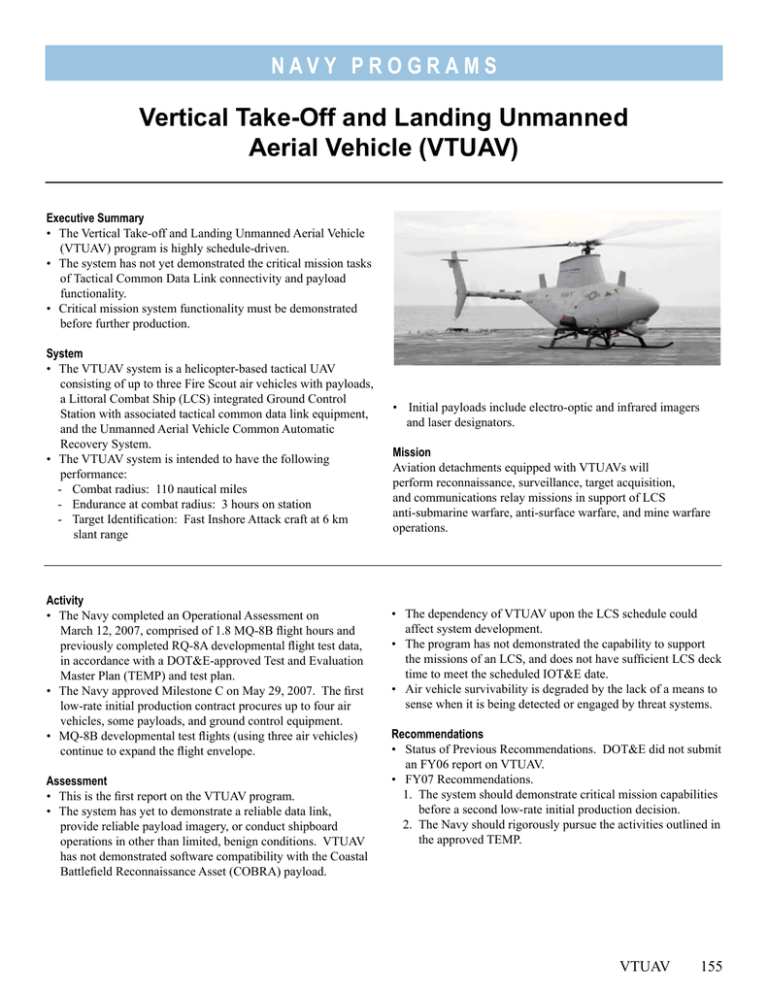
N av y P R O G R A M S Vertical Take-Off and Landing Unmanned Aerial Vehicle (VTUAV) Executive Summary • The Vertical Take-off and Landing Unmanned Aerial Vehicle (VTUAV) program is highly schedule-driven. • The system has not yet demonstrated the critical mission tasks of Tactical Common Data Link connectivity and payload functionality. • Critical mission system functionality must be demonstrated before further production. System • The VTUAV system is a helicopter-based tactical UAV consisting of up to three Fire Scout air vehicles with payloads, a Littoral Combat Ship (LCS) integrated Ground Control Station with associated tactical common data link equipment, and the Unmanned Aerial Vehicle Common Automatic Recovery System. • The VTUAV system is intended to have the following performance: - Combat radius: 110 nautical miles - Endurance at combat radius: 3 hours on station - Target Identification: Fast Inshore Attack craft at 6 km slant range Activity • The Navy completed an Operational Assessment on March 12, 2007, comprised of 1.8 MQ-8B flight hours and previously completed RQ-8A developmental flight test data, in accordance with a DOT&E-approved Test and Evaluation Master Plan (TEMP) and test plan. • The Navy approved Milestone C on May 29, 2007. The first low-rate initial production contract procures up to four air vehicles, some payloads, and ground control equipment. • MQ-8B developmental test flights (using three air vehicles) continue to expand the flight envelope. Assessment • This is the first report on the VTUAV program. • The system has yet to demonstrate a reliable data link, provide reliable payload imagery, or conduct shipboard operations in other than limited, benign conditions. VTUAV has not demonstrated software compatibility with the Coastal Battlefield Reconnaissance Asset (COBRA) payload. • Initial payloads include electro-optic and infrared imagers and laser designators. Mission Aviation detachments equipped with VTUAVs will perform reconnaissance, surveillance, target acquisition, and communications relay missions in support of LCS anti‑submarine warfare, anti-surface warfare, and mine warfare operations. • The dependency of VTUAV upon the LCS schedule could affect system development. • The program has not demonstrated the capability to support the missions of an LCS, and does not have sufficient LCS deck time to meet the scheduled IOT&E date. • Air vehicle survivability is degraded by the lack of a means to sense when it is being detected or engaged by threat systems. Recommendations • Status of Previous Recommendations. DOT&E did not submit an FY06 report on VTUAV. • FY07 Recommendations. 1. The system should demonstrate critical mission capabilities before a second low-rate initial production decision. 2. The Navy should rigorously pursue the activities outlined in the approved TEMP. VTUAV 155 N av y P R O G R A M S 156
